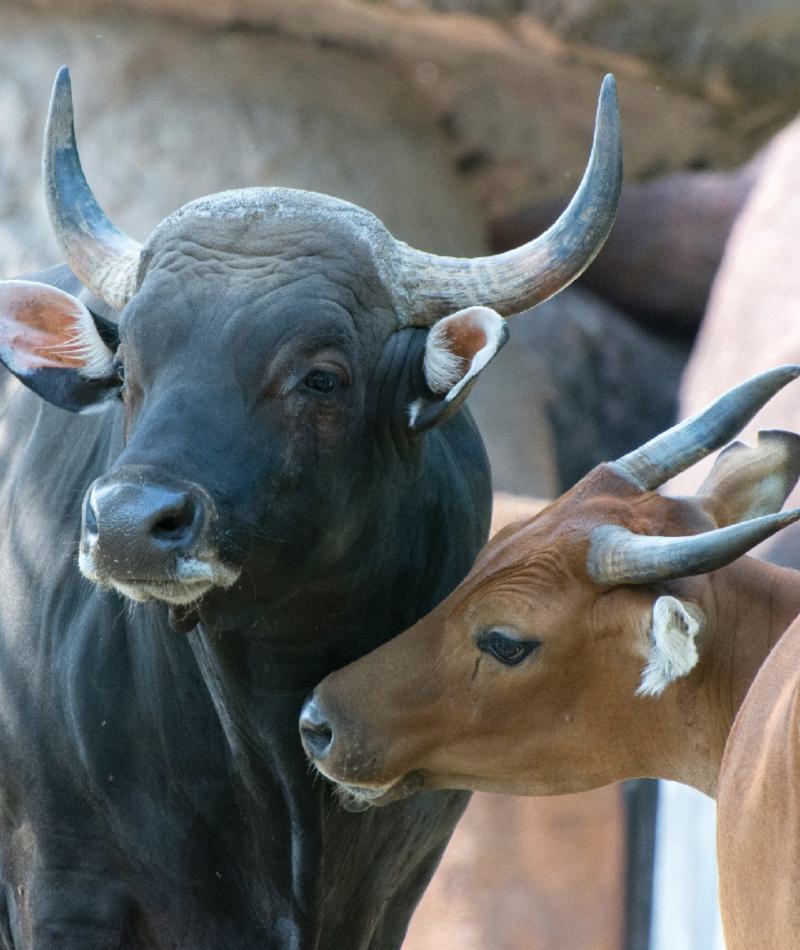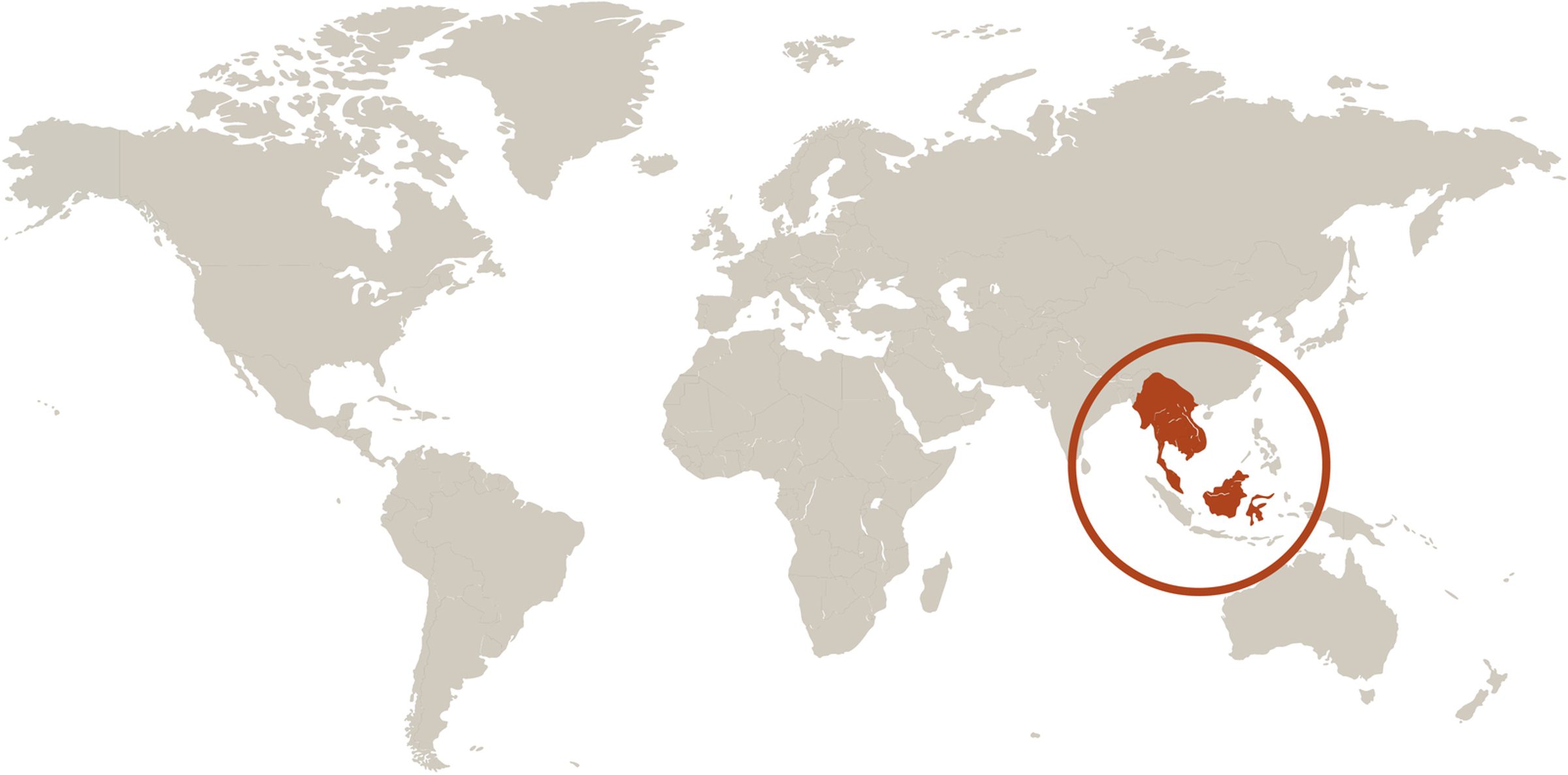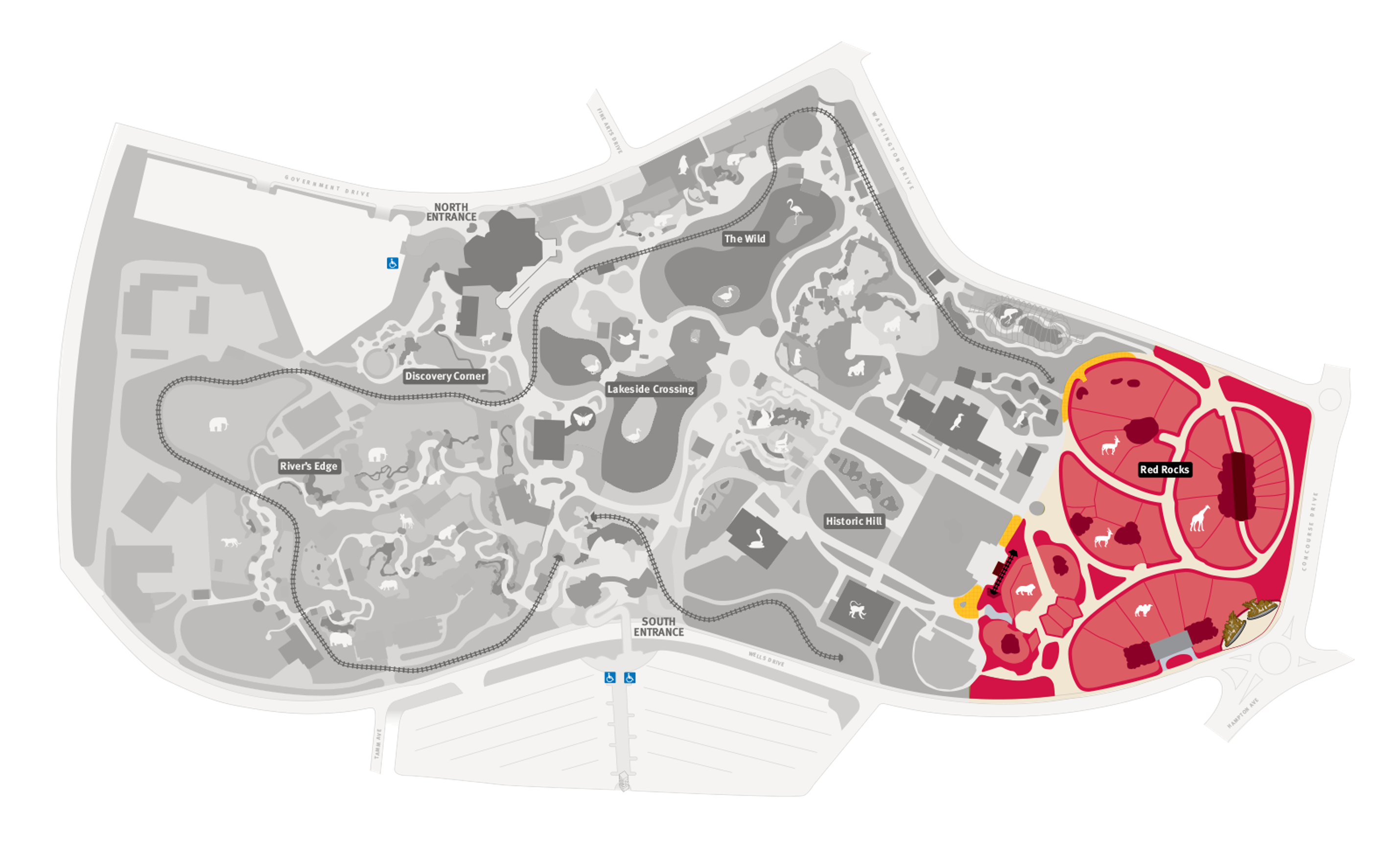
Banteng
Bos javanicus
Did you know?
- Banteng are part of the Bovidae family, which they share with bison and buffalo.
- They are a type of wild cattle with families that consists of one male and multiple females.
- They live in a variety of habitats in Southeastern Asia, both mainland and Indonesia.
- They are a tolerant, shy, non-territorial species and typically more easy-going than other wild cattle species.
- They have characteristic white stockings and rump patches.
Changing Colors
Both male and female banteng calves are born with red coats. During their first year of life, juvenile bantengs develop white stockings and rump patches. At this time, juvenile banteng bulls' (males’) coats gradually turn from red to black. Adult banteng bulls have black coats and adult banteng cows have chestnut coats.
Pioneering Science
Banteng have helped scientists realize technologies that might one day save species from extinction. In 2004, the banteng became the first ever cloned endangered species. The choice to clone the banteng DNA was decided to save genes that were underrepresented in the population. Additionally, banteng have successfully reproduced through artificial insemination and embryo transfer. These medical achievements may play a crucial role in saving animals that are disappearing in the wild.
Threat Level
- Unknown
- Common
- Near Threatened
- Threatened
- Endangered
- Critically Endangered
- Extinct in the Wild
Critically Endangered
The Banteng faces an extremely high risk of extinction in the wild.
Range
Southeastern Asia, both mainland and Indonesia
Habitat
Dense forests, glades, grasslands

We care about Bantengs
Hunting pressure and loss of habitat due to human activity throughout their native range in southeastern Asia continue to endanger this species. The banteng’s habitat is also prime habitat for domestic cattle, and so, much of their habitat has been taken by farmers. Additionally, the introduction of disease that is carried and spread by livestock threatens banteng.
The Saint Louis Zoo participates in the Species Survival Plan for bantengs, a cooperative breeding program that helps ensure a healthy population of animals. Learn more about how we are helping wildlife around the world.
Find this animal in Red Rocks

SAINT LOUIS ZOO ZONE
Red Rocks
At Red Rocks, you’ll view some of the world’s most powerful predators living near some of the world’s most graceful prey. Tigers, zebra and giraffes all share the natural rocky boulders and outcroppings as their territory. With shading trees and a bird or two among the mammals, Red Rocks is a great place to spend a day at the Saint Louis Zoo.

